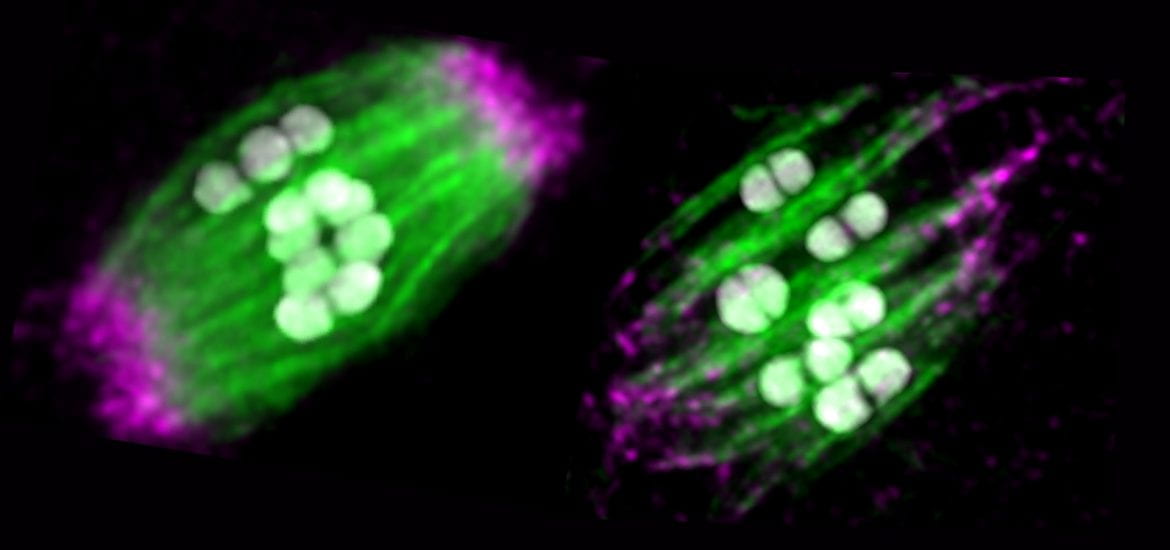Proper segregation of chromosomes during cell division depends upon the formation of a bipolar spindle. In most cell types, duplicated centrosomes contribute to spindle assembly by nucleating microtubules and helping to organize the two poles. However, during meiosis in female animals the centrosomes are degraded prior to the meiotic divisions, and therefore oocyte spindles form in their absence. We are interested in understanding how these acentrosomal spindles form, how they are organized, and how they promote proper chromosome partitioning. To address these questions, we combine high-resolution microscopy with genetic, genomic, and biochemical approaches in the model organism C. elegans.
